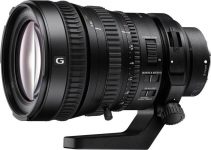Adding some creative and imaginative visual effects to your work is always something that brings more value to your video productions. Today we have a great tutorial from Film Riot that shows us how easy it is to stylize your titles in Adobe After Effects.
This is one of those great and simple tricks that any filmmaker should have in his/her arsenal. You can follow Film Riot on Twitter for more fun and useful stuff, including the occasional “behind the scenes” look at what goes on while making the show.
This is another example of how powerful and limitless in terms of creativity and efficiency the Adobe After Effects could be. It’s a big time saver as well. The latest After Effects CC update features even more enhanced keying effects, Live Text Templates for Premiere Pro, flexible masking options and Premiere Pro interchange, faster performance in the Warp Stabilizer VFX effect, the ability to import Sony RAW footage from F5, F55, and F65 cameras. In addition scripting access to render settings and output module settings among many more are included.
Since the move to the Creative Cloud, it’s been obvious that Adobe is leaning towards a more integrated approach to its tool set of creative applications. For me, the ability to pull off a good key even from poorly shot and highly compressed 8-bit H.264 video images, is essential and a must. Even now, many indie filmmakers struggle with keying. Achieving nice and professional looking results was definitely a bit of a pain. Fortunately, not anymore!
The other appealing feature is the enhanced rotoscoping tools in After Effects CC. Now everyone can separate moving objects in a frame sequence in a matter of seconds, literally. One can even substitute bigger parts and objects in the frame while preserving even the tiniest details with the Refine Edge Tool just like we used to do in Photoshop which is crucial in terms of better control over the image, especially in exterior shooting situations where this approach might be a big advantage.
Furthermore, in terms of compatibility the following files are supported for import in the 2014 release of After Effects CC.
- Sony RAW files (raw footage files from F5, F55, and F65 cameras)
- MPEG-4 SStP (Simple Studio Profile) Sony SR MXF files
- indexed-color PNG files and grayscale PNG files with transparency
- Photoshop Large Document (.psb) files
- CMYK JPEG files
- RED EPIC Dragon 6K files
- Cinema 4D (.c4d) 3D scene files
- DNxHD MXF OP1a and Op-Atom files
- QuickTime (.mov) files using DNxHD codecs (without installing additional codecs)
- QuickTime (.mov) files using ProRes codecs (without installing additional codecs) on Mac OS
- XAVC (Sony 4K)
- AVC-Intra 200
It’s always great to have fresh and updated copy of After Effects CC installed on your Mac or PC. With the subscription model Adobe have introduced recently it’s even easier than ever.
[via FilmRiot and motionworks.net]
Disclaimer: As an Amazon Associate partner and participant in B&H and Adorama Affiliate programmes, we earn a small comission from each purchase made through the affiliate links listed above at no additional cost to you.



